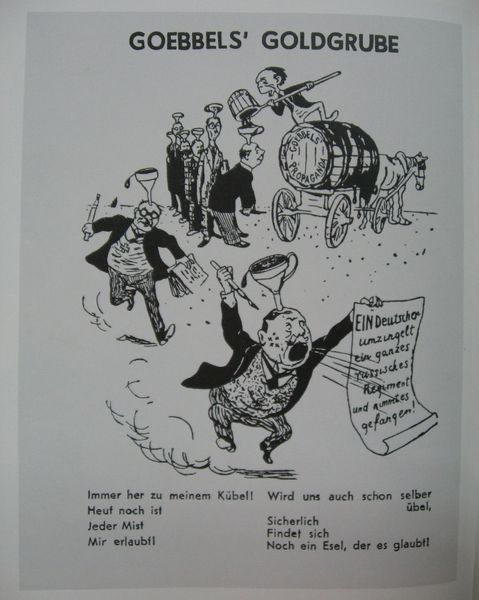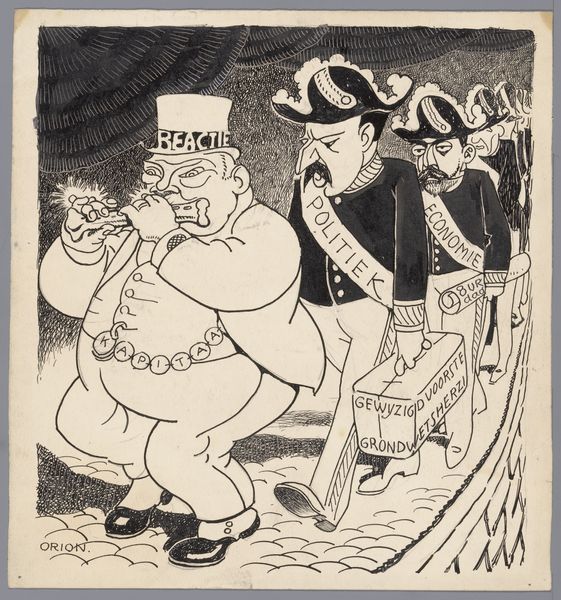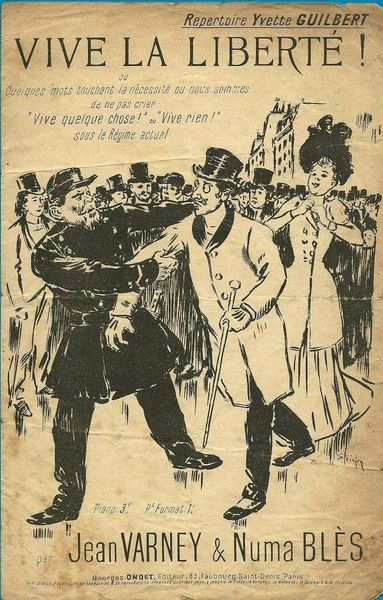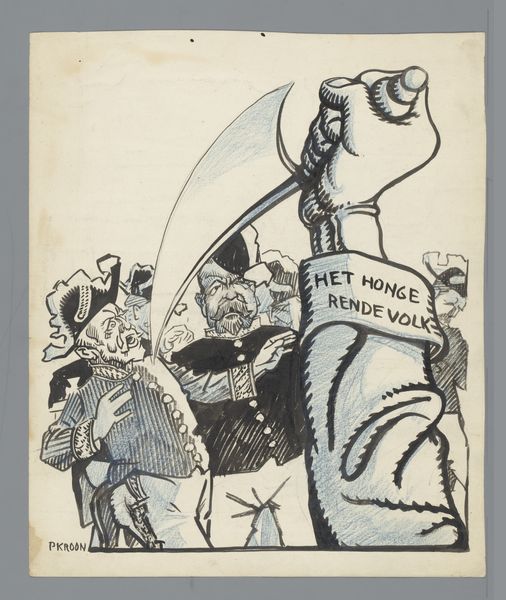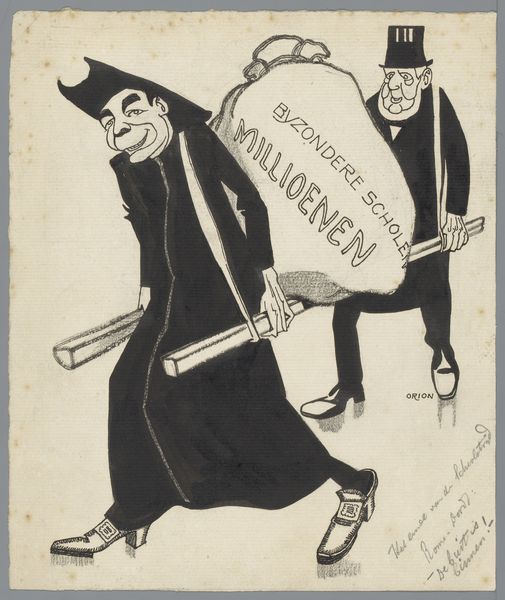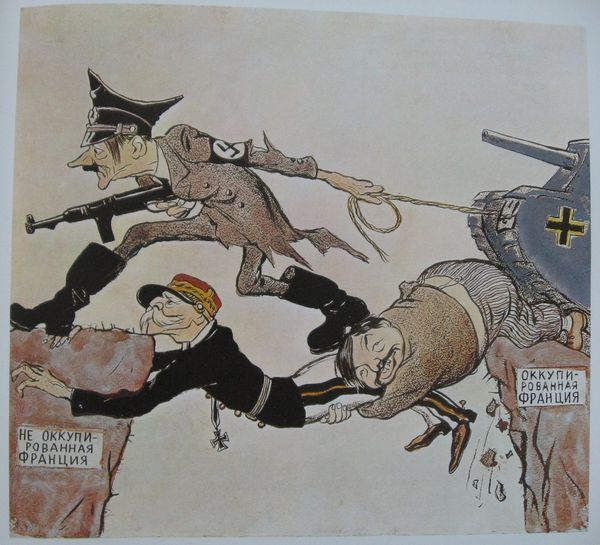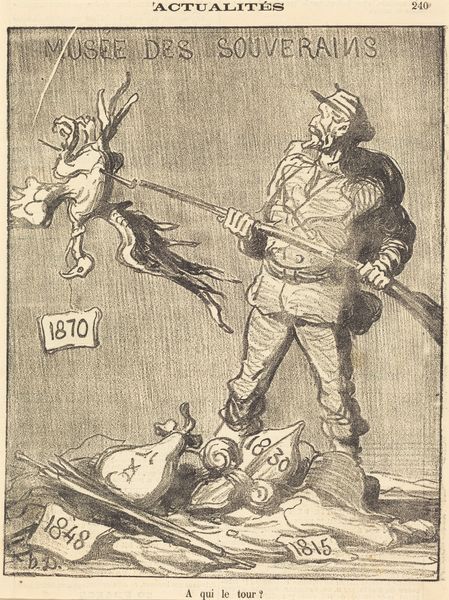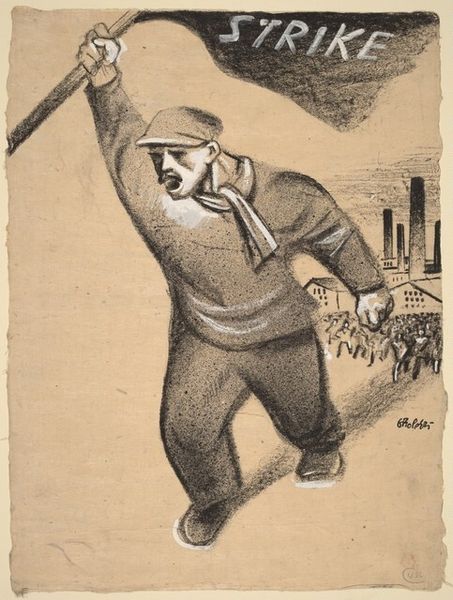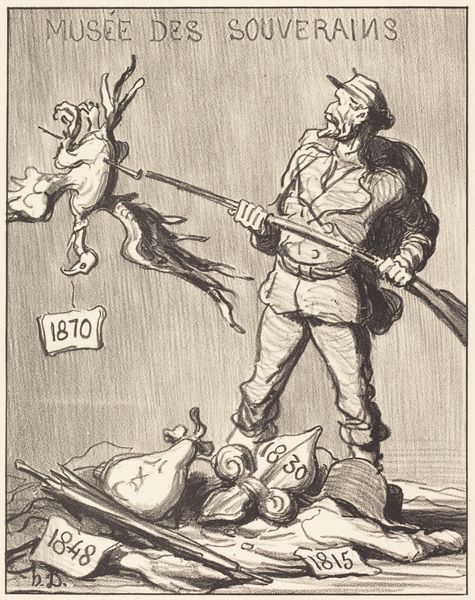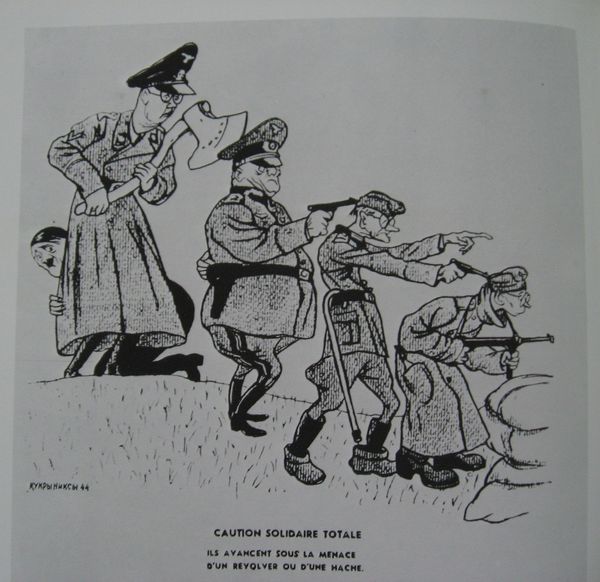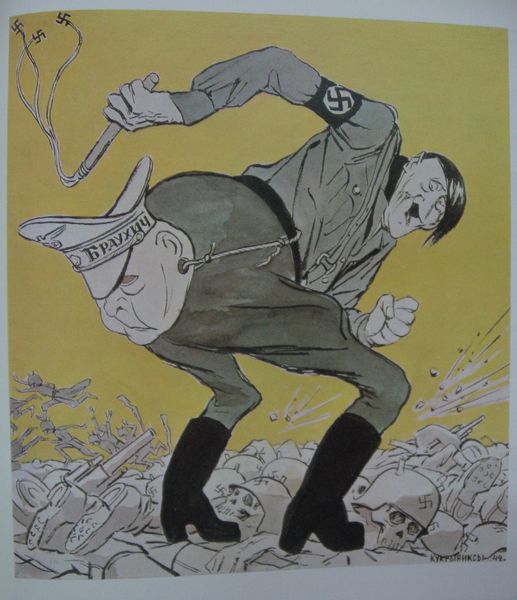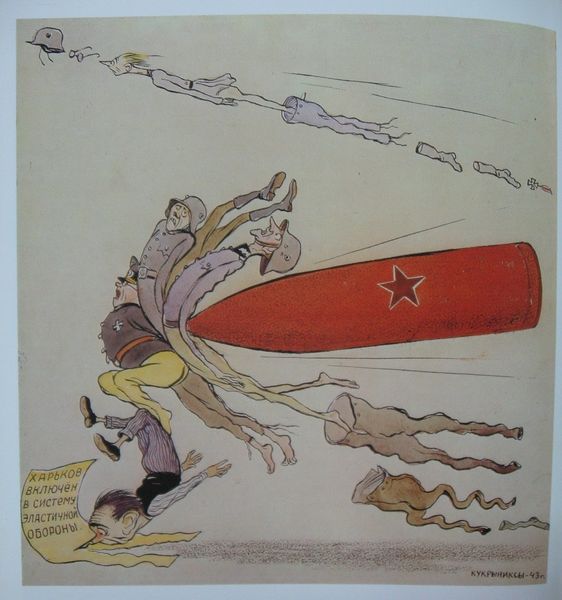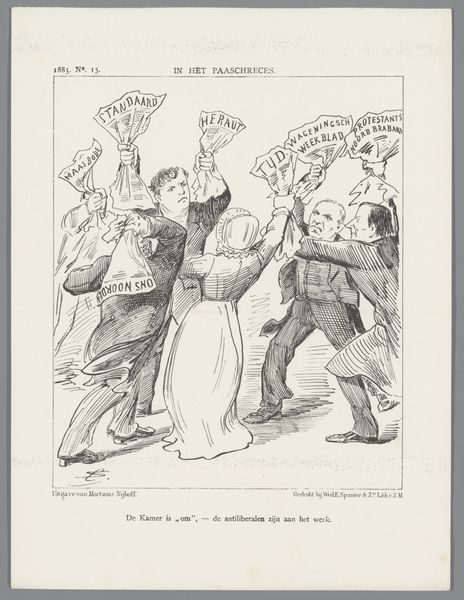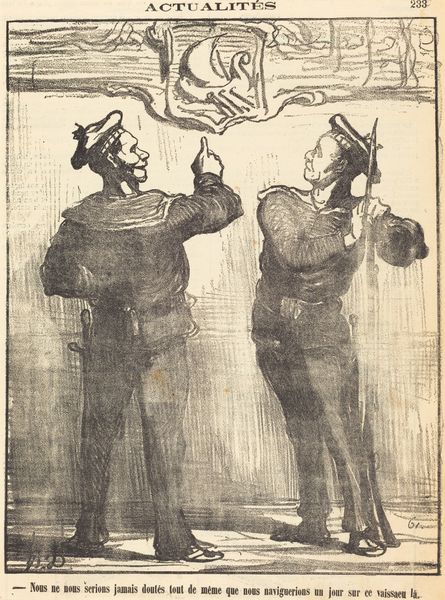
The vile brute and it`s band be hanged on the lampstand (The TASS Window №546/546a) 1942
0:00
0:00
graphic-art, mixed-media, poster
#
graphic-art
#
mixed-media
#
caricature
#
war
#
soviet-nonconformist-art
#
mixed medium
#
poster
#
mixed media
Copyright: Kukryniksy,Fair Use
Curator: Standing before us is "The vile brute and its band be hanged on the lampstand (The TASS Window №546/546a)," created in 1942 by the collective Kukryniksy. The artwork is a mixed-media poster, specifically a TASS window, produced during World War II. Editor: It strikes me immediately as viscerally impactful. The distorted figure, the hanging, it all feels quite grotesque and designed to elicit a strong emotional response. Curator: Precisely. The poster uses caricature and stark imagery to demonize collaborators with the Nazi regime. TASS Windows like these were essentially propaganda tools, reproduced quickly and disseminated widely, a form of agitprop deeply rooted in Soviet ideology. Think about the speed and scale of their production—a sort of wartime factory churning out visual rhetoric. Editor: Right. The visual language here is fascinating. The collaborative regime figure dangles by a rope and is almost positioned centrally between the Nazi's hands and raised instruments of French nationals—signaling the collaboration between the Third Reich and national traitors to their people and home nations, like French pro-Nazi forces. What does the bag say? Curator: It says "To Germany for Work" a depiction of citizens deported for their labour to support Nazi effort. So this speaks to labor, extraction, and resource allocation as integral components of the war machine depicted here. The poster itself becomes part of the machinery. Its rapid production speaks to resource deployment—inks, paper, labor, all for this message. Editor: Indeed. And if we delve into that message, it becomes a critique of power dynamics. We have caricatured villains with all the sharp weapons standing for aggression juxtaposed against defenseless nationals forced into labor and poverty through the hanging figure depicted here. What were the distribution and impact, then, of these posters within the Soviet territories? Curator: They were plastered in public spaces. Given limited access to other media, they were significant visual source. Think about the act of their placement – the labor involved in physically hanging them – and the viewers' consumption. Each viewing moment further embedding its message into the social consciousness of Soviet nationalism. Editor: Seeing how propaganda functions visually across cultures reveals a broader network. Looking at this piece, I wonder about its effectiveness today, outside its original sociopolitical setting. Curator: It's a reminder that art isn’t just an aesthetic experience; it’s a material process intertwined with production, consumption, and above all, history and human agency. Editor: Absolutely. By examining war through the lens of the art historical objects created from it, we may recognize the ways in which the world intersects even the most seemingly distant corners of human experience.
Comments
No comments
Be the first to comment and join the conversation on the ultimate creative platform.
